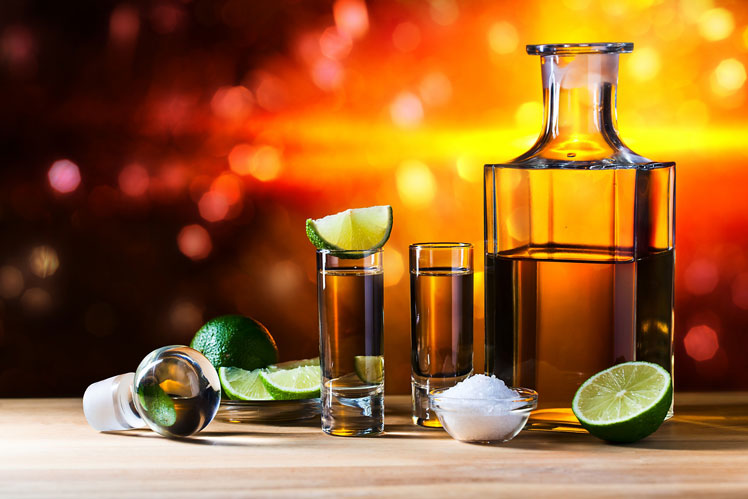
As the allure of craft spirits expands globally, tequila secures its spot as a sophisticated and diverse option for enthusiasts and novices alike. The journey of discovering craft tequila is as rich and colorful as Mexico’s culture, steeped in tradition and bursting with an array of unique flavors. To begin exploring this fascinating world or to refine an existing appreciation, one must start by selecting high-quality varieties, such as the ones curated in this diverse tequila collection.
The Heritage of Craft Tequila
The history of tequila is deeply rooted in Mexican culture, spanning centuries of artisanal craft and dedication. This storied past begins with the blue agave, a hardy plant that thrives in Mexico’s volcanic soil, offering up its sugary heart for fermentation and distillation into tequila. In the rolling landscapes of regions such as Jalisco, crafting tequila is often a family affair, where knowledge and techniques pass down through generations, preserving the authenticity and heritage of this revered spirit. The result is a drink that not only exemplifies Mexico’s rich history and terroir but also the lives and stories of the people who create it.
Understanding Craft Tequila Production
The production process of craft tequila is an artisanal endeavor that honors tradition while embracing innovation. Each step is carried out with careful consideration, beginning with the harvest of mature agave plants, which can take upwards of eight to ten years to reach the peak of sugar development. The harvested agave hearts, or piñas, undergo a slow-roasting process to caramelize their sugars before being crushed and pressed to extract their sweet juice. This juice is then allowed to ferment naturally, often employing local yeasts contributing to the spirit’s distinctive flavor profile. The resulting liquid is distilled, and aged tequilas are matured in oak barrels, gracefully imbued with complexity and depth.
Deciphering Tequila Varieties
Tequila’s classification system is based on its aging process. Blanco, or silver tequila, is typically unaged, offering a pure expression of the agave plant’s flavor. Reposado tequila, aged for two months to a year, develops a softer profile with a subtle golden color and hints of vanilla and caramel. Añejo and Extra Añejo tequilas, aged for one to three years or more respectively, become increasingly sophisticated, with a richness and depth rivaling fine whiskies. Understanding these varieties is crucial for appreciating the tequila experience and identifying personal preferences.
Identifying Quality in Craft Tequila
To recognize a quality tequila, one must search for the ‘100% agave’ label, which assures no presence of added sugars or artificial flavors. This label distinguishes genuine craft tequila from ‘mixtos,’ lesser blends that dilute the distinctive characteristics of the agave. By adhering to this indicator, enthusiasts can be certain they are experiencing authentic, high-quality tequila that truly celebrates the craftsmanship of the distillers.
Tasting Tips for Beginners
For newcomers to the world of tequila, a structured approach to tasting can be incredibly rewarding. Starting with a Blanco variety allows one to appreciate the fundamental flavors of the spirit. Observing the color, inhaling the bouquet, and savoring the layered flavors on the palate are all part of the tequila tasting ritual that uncovers the unique aspects of each variety.
Proper Glassware for Tequila Tasting
The right glassware serves as the gateway to a fully immersive tasting experience. A small snifter or tequila-tasting glass, known as a ‘Caballito,’ is recommended to capture the spirit’s aromatic qualities and flavor nuances properly. These glasses are designed to concentrate the aroma and direct it towards the nose, while the wide bowl allows the tequila to breathe, revealing its full complexity.
The Significance of Terroir
Terroir plays a pivotal role in shaping the essence of tequila. This French term, traditionally associated with winemaking, refers to the natural environment where the agave grows, including the soil, climate, and topography. These factors confer distinct characteristics upon each craft tequila, contributing to its unique sensory profile. Understanding terroir provides insight into the diversity of tequila and the profound impact of nature on the spirit’s flavor and quality.
Highland vs. Lowland Tequila
Tequilas from the highlands are known for their sweet, floral, and fruity notes, reflecting the region’s red, iron-rich soil and higher elevation. In contrast, lowland tequilas, grounded in the valley’s mineral-rich volcanic earth, are recognized for their herbaceous and earthy flavors. Each offers a distinct expression of place, introducing the drinker to the rich tapestry of Mexico’s agave-growing regions.
Tequila Cocktails and Food Pairings
Craft tequila’s versatility shines brightly when used in cocktails or with meals. The classic Margarita, a well-balanced blend of tequila, lime, and sweetener, is a testament to tequila’s ability to shine in mixed drinks. In contrast, the Paloma, a refreshing tequila and grapefruit soda concoction demonstrates the spirit’s compatibility with various flavors. When pairing tequila with food, the spirit’s variety should guide the choice of dishes, with lighter Blancos cutting through the richness of fatty foods and aged varieties complementing complex, spiced dishes.
Crafting the Perfect Margarita
The Margarita, an iconic tequila cocktail, embraces simplicity and purity in its creation. Using high-quality craft tequila, preferably a Blanco or Reposado, fresh lime juice, and agave nectar yields a drink that balances tartness, sweetness, and the tequila’s spirited punch. This cocktail showcases the spirit’s flexibility and celebrates its Mexican heritage.
Sustainability in Tequila Production
In response to growing environmental concerns, sustainable practices have become integral to the craft tequila industry’s ethos. Forward-thinking producers emphasize the importance of water conservation, energy efficiency, and ethical farming techniques in their operations, helping to safeguard the blue agave’s future and the wellbeing of the ecosystems that support tequila production.
Sustainable Agave Cultivation
Producers committed to sustainability are adopting practices such as cultivating diverse agave varieties, practicing crop rotation, and avoiding pesticides that can harm the environment. These measures protect not only the agave plants but also the rich biodiversity of their growing regions, ensuring that future generations can enjoy craft tequila.
Stay in touch to get more updates & news on Wellknown Figure!






